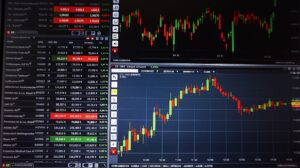
Investments are made with the intention of getting a greater return over a period of time. Now that we know how the value of a currency is determined let us look at what are the ways in which people spend this money to make more money.
- Term deposit or fixed deposit or certificate of deposit (CD)
This is a type of investment that is commonly offered by banks instead of a regular savings account. The depositor is expected to hold the CD until its maturity. Depending on countries, they are offered from 1 month to 10 years.
Typically, the longer the duration of the term, higher is the fixed interest rate. At the end of the term, customers can choose to withdraw or reinvest their gains including the principal into a new CD. Personal CD accounts receive a higher interest rate than business CDs.
Customers often make use of a ladder-strategy where equal amounts of money is deposited to 3-year, 2-year and 1-year CDs. This way the investor has his deposits mature every year and can withdraw or reinvest without additional charges. The reason why this is a big deal is because withdrawals before maturity of the term is met with penalties. Some of the other downsides are as follows,
- Terms and Conditions may be changeable – Look out for this phrase “We can add to, delete or make any other changes” before signing the documents.
- Callable – Banks can close a CD before maturity and return the investment plus gains when it finds it can no longer pay the high interest rates as per the contract.
- Banks may not notify the investor at the time of maturity and automatically roll over the investment to another CD at a lower interest rates. The depositor must be aware of the maturity date and use his interval mentioned in the contract to decide what to do with the funds without being met with additional charges.
CDs may be beneficial only when the interest rates are higher than inflation rates in the economy. So long term investments at a fixed rate are good only if inflation is sure to go down in the following 10 years, which is a very rare phenomenon.
This article is part of an on-going series on investing. Use category ‘Money’ to browse them all at once.






